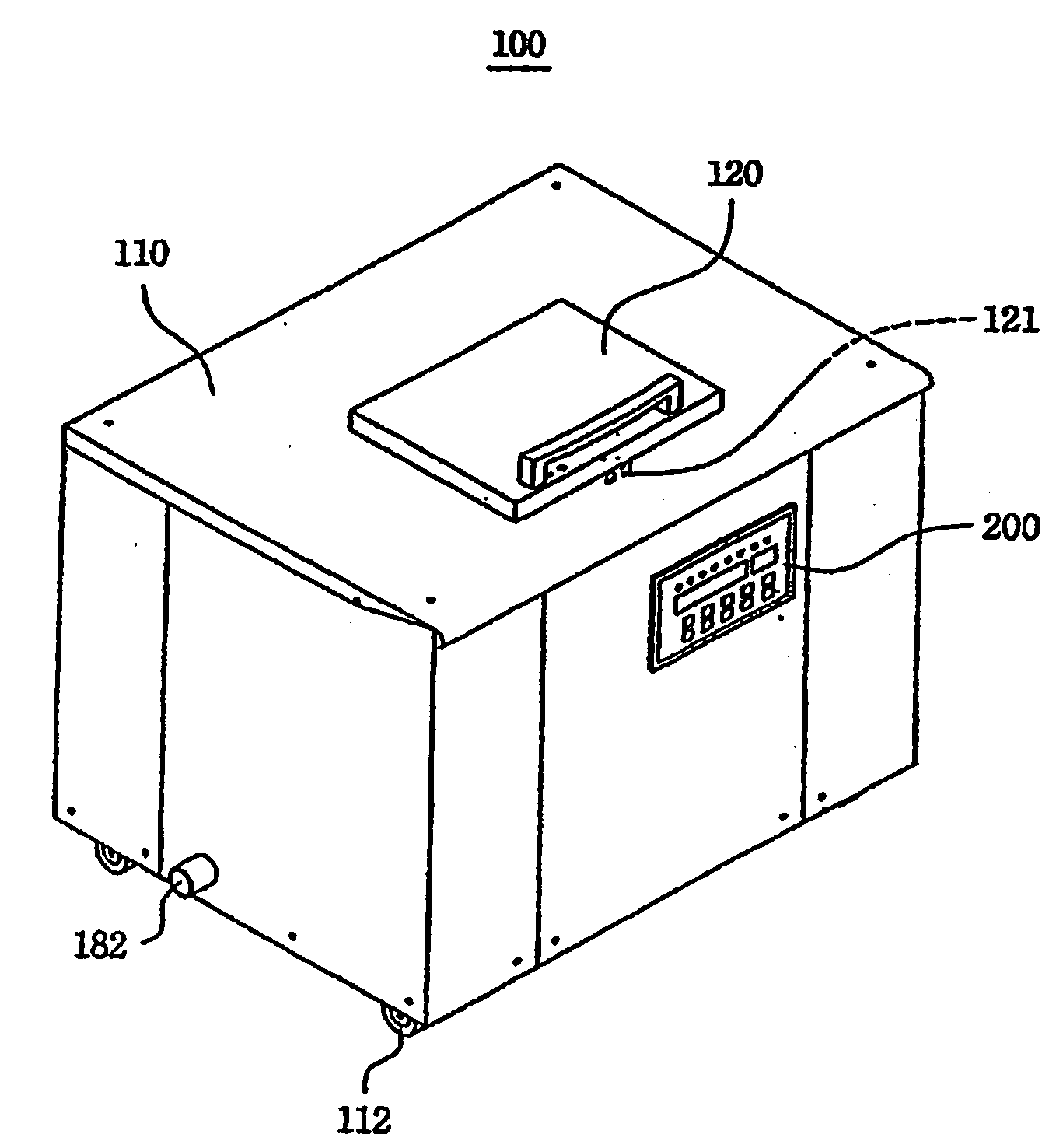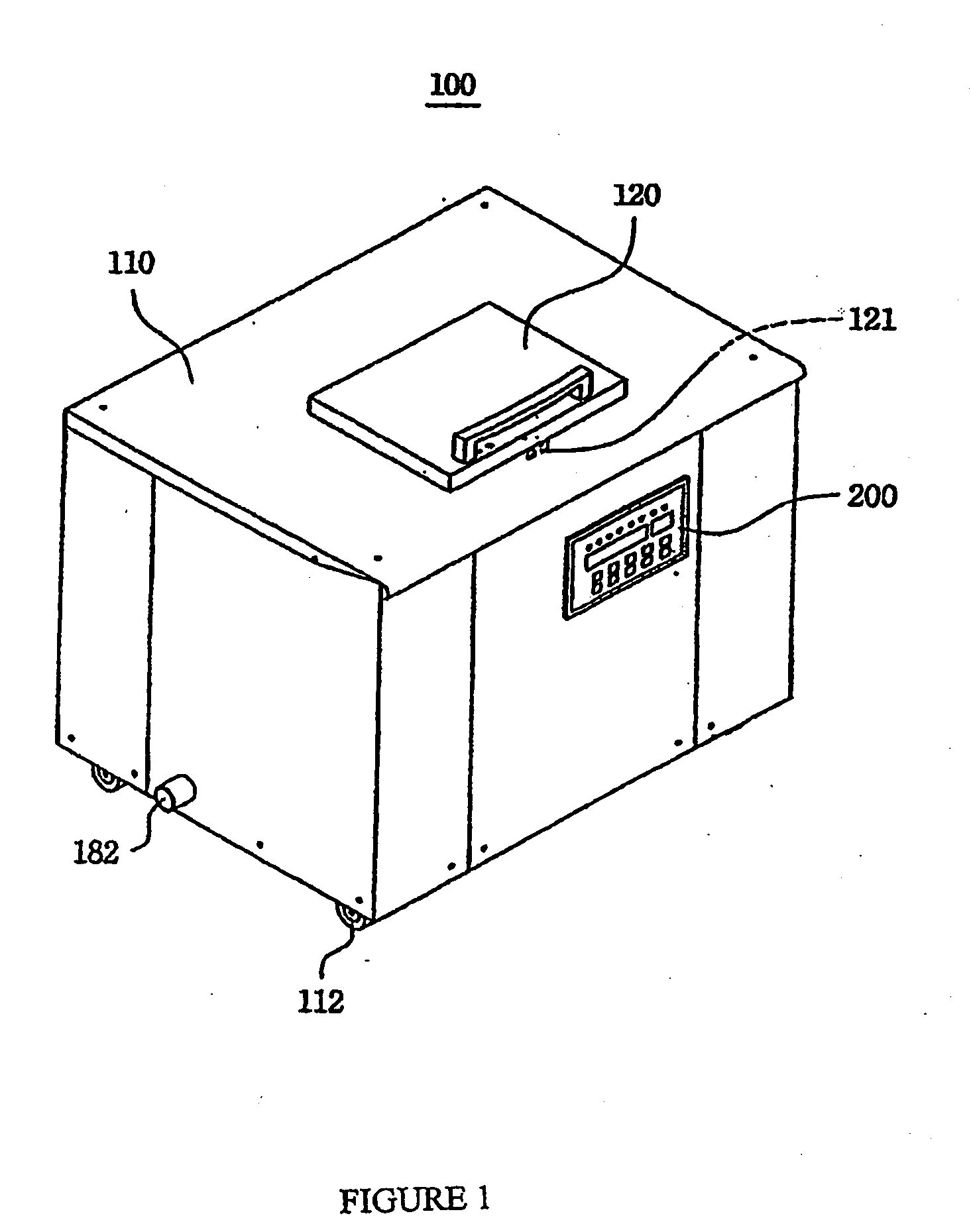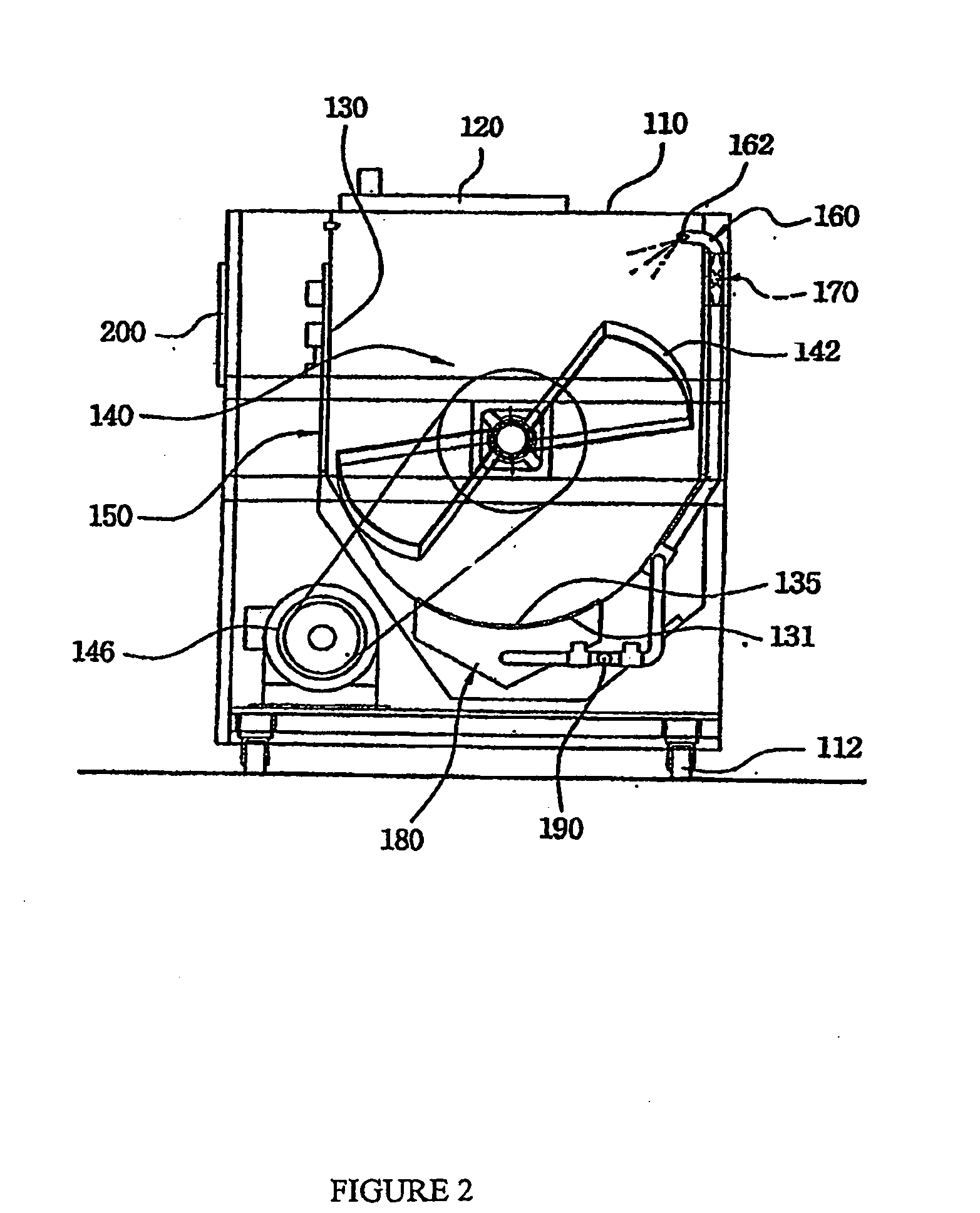Food waste treatment device using microorganisms
a technology of food waste and treatment device, which is applied in the direction of biomass after-treatment, transportation and packaging, rotary stirring mixer, etc., can solve the problems of generating large amounts of leftover food in homes and restaurants, reclaiming or incineration of all leftover food/food waste, and odors typical of reclamation methods
- Summary
- Abstract
- Description
- Claims
- Application Information
AI Technical Summary
Problems solved by technology
Method used
Image
Examples
example 1
Preparation of Microbial Mixture
[0120]Microbes Used: Bacillus subtilis (3 Kinds) and Lactobacillus
TABLE 2Culture MediumRAW MATERIAL%Peptone2Yeast Extract1Glucose2Sodium Acetate0.1Ammonium citrate0.1Sodium carbonate0.05K2HPO40.1MgSO40.01MnSO40.005ZnSO40.001
[0121]1% of each spawn was inoculated to the culture medium. The culture medium, set forth in Table 2 (above), was added in the order of peptone, yeast extract and glucose to the culture fluid and dissolved completely at 140° F. Culture medium was pasteurized for at least 15 minutes at about 250° F. at 1.2 hPa, with no negative air pressure, and a pressure higher than 0.5 vvm of positive air when cooling after pasteurization was complete, maintaining constant water volume throughout the process. The volume of water used was the same before and after pasteurization of the culture medium.
[0122]Microbes were cultivated via depths nurture method (air supply and stirring) for 18-30 hours at 77° F.-98.6° F. and a pH of between about 6.0 ...
example 2
Mixing with Filler Material and Production of Final Product
[0126]The primary powder of the microbe mixture (made in Example 1) was mixed with husks (the filler material) and protectant in the following ratio: 0.03527 ounces primary powder (approximately 1 gram), 0.67 ounces protectant, 2.2 pounds husks. This proportion was prepared for a 250 pound (or approximately 110 kilograms) daily capacity of food waste. The primary powder / filler material / protectant mixture was placed into a mixer and mixed for 30 to 60 minutes. The final product was packed and stored in cool dark place at room temperature.
example 3
Breakdown of Food Waste
[0127]A food waste treatment device was prepared using the microbial mixture of Example 2. 40% of the volume of the container of the device was filled with the husks of Example 2. The husks were wet with enough water to inoculate the microorganisms. After 3-4 minutes, food waste was placed in the device. At this time, the microorganisms were activated and started to break down the waste, then discharged the water through the filter screen.
PUM
 Login to View More
Login to View More Abstract
Description
Claims
Application Information
 Login to View More
Login to View More - R&D
- Intellectual Property
- Life Sciences
- Materials
- Tech Scout
- Unparalleled Data Quality
- Higher Quality Content
- 60% Fewer Hallucinations
Browse by: Latest US Patents, China's latest patents, Technical Efficacy Thesaurus, Application Domain, Technology Topic, Popular Technical Reports.
© 2025 PatSnap. All rights reserved.Legal|Privacy policy|Modern Slavery Act Transparency Statement|Sitemap|About US| Contact US: help@patsnap.com



